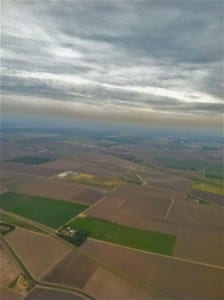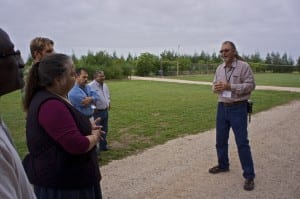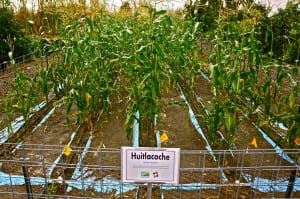 During November 13-16th the USDA Beginning Farmer & Rancher Development Program supported by the National Institute of Food & Agriculture (NIFA) held its 4th Annual Director Meeting. Hosted by the University of Texas-Pan American in McAllen, Texas, this year’s theme was: Cruzando Fronteras: Supporting Diversity in Agriculture. Attendees experienced first-hand agricultural issues and opportunities both in the borderland setting of the lower Rio Grande Valley as well as from presentations from most of the continental US as well as Hawaii and the Virgin Islands.
During November 13-16th the USDA Beginning Farmer & Rancher Development Program supported by the National Institute of Food & Agriculture (NIFA) held its 4th Annual Director Meeting. Hosted by the University of Texas-Pan American in McAllen, Texas, this year’s theme was: Cruzando Fronteras: Supporting Diversity in Agriculture. Attendees experienced first-hand agricultural issues and opportunities both in the borderland setting of the lower Rio Grande Valley as well as from presentations from most of the continental US as well as Hawaii and the Virgin Islands.
Each year recipients of USDA Beginning Farmer & Rancher grants meet to learn about other projects across the country, hear about successes & challenges, and share ideas about emerging future topics. Jiff Martin of UConn and I went to share 1st year experiences about our Scaling Up Program for Connecticut’s community of beginning farmers. Challenges we experience with our farmer-clients, such as access to affordable good farm land and securing sufficient loans to support farm infrastructure development were common concerns beginning farmers faced in other regions of the country. As a farmer-mentor I sought out coordinators of incubator and farmer-apprentice programs. I wanted to learn how they addressed subjects such as crop rotations, sustainable nutrient management practices, tillage implements, farm loan programs, and insecurity concerns from short-term farmland leases for cash-strapped new farmers. A theme common to many at the meeting was the value of one-to-one interaction between mentors &/or service providers to individual farmers.
 My highlight for the McAllen event was a field trip organized by George Bennack, Executive Director for Business and Rural Development at the University of Texas-Pan American. Possessing a wealth of historical, sociological & botanical knowledge he was the perfect tour guide as we rode into the semi arid borderlands of the lower Rio Grande Valley to visit a start-up incubator farm and a two year old university research facility.
My highlight for the McAllen event was a field trip organized by George Bennack, Executive Director for Business and Rural Development at the University of Texas-Pan American. Possessing a wealth of historical, sociological & botanical knowledge he was the perfect tour guide as we rode into the semi arid borderlands of the lower Rio Grande Valley to visit a start-up incubator farm and a two year old university research facility.
Driving across a flat expanse of bare stubble fields we passed new wind farms, Texas-scale rows of sugar cane, and groves of citrus before we arrived at the UPTA Specialty-Crop Research & Demonstration Site. Its focus is the development & production of specialty crops for Hispanic-influenced areas. We were treated to a generous snack of mesquite-grilled huitlacoche, on hand-made corn tortillas with fresh cilantro, limes, and homemade salsa, all washed down with lemonade sweetened with sugar cane syrup as well as fresh papayas. All of the ingredients came from the research farm, even the mesquite logs.
 Huitlacoche, I learned is a Nahuatl-Spanish word meaning hibernating/sleeping excrement or possibly raven’s excrement. It’s marketed to Anglos as well as Hispanics at more than $20/lb as Mexican caviar. Actually it’s the pathogenic fungus, Ustilago maydis, a black gall-like growth that grows erratically on corn silk. The Research Farm is trialing corn varieties and inoculation techniques to commercially produce what is more commonly known as corn smut. Take my word, it was delicious!
Huitlacoche, I learned is a Nahuatl-Spanish word meaning hibernating/sleeping excrement or possibly raven’s excrement. It’s marketed to Anglos as well as Hispanics at more than $20/lb as Mexican caviar. Actually it’s the pathogenic fungus, Ustilago maydis, a black gall-like growth that grows erratically on corn silk. The Research Farm is trialing corn varieties and inoculation techniques to commercially produce what is more commonly known as corn smut. Take my word, it was delicious!
Eero Ruuttila
UConn Scaling Up Program